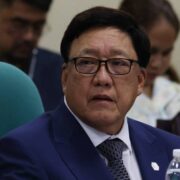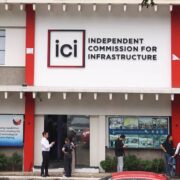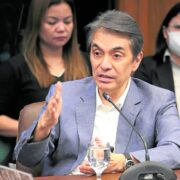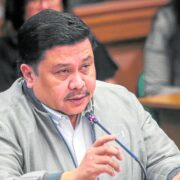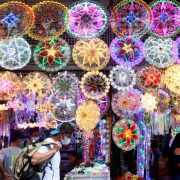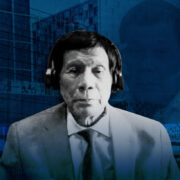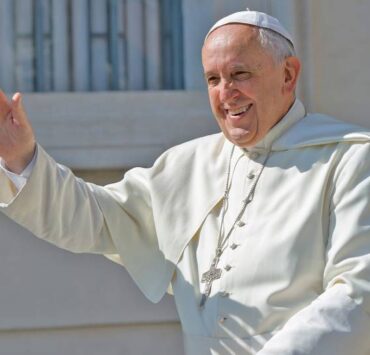Thank you, Lolo Kiko

“Dearest brothers and sisters, with deep sorrow I must announce the death of our Holy Father Francis. At 7:35 this morning, the Bishop of Rome, Francis, returned to the house of the Father.” These were the words uttered by Cardinal Kevin Farrell, Camerlengo of the Holy Roman Church, when he broke the news of the Pope’s death to the world.
It was past 4 p.m., Manila time. I was resting in school after finishing my scheduled classes. I checked my social media feed and that’s when I saw it—a post by a credible media outlet showing an image of Pope Francis in black and white. I gasped and wailed, turning away from my phone in disbelief, praying that it was a lie.
My friends stared at me, surprised by my outburst. I looked at my phone again and read, “Pope Francis, 1936-2025.” It wasn’t a false alarm. The Supreme Pontiff of the Catholic Church, the Shepherd of the Christian flock, our Pope, had died the day after Easter Sunday.
Let’s look back at the life of the humble People’s Pope.
He was born Jorge Mario Bergoglio on Dec. 17, 1936 in Buenos Aires. His parents are Mario José Bergoglio, an accountant employed by the railways, and Regina María Sívori, a committed wife dedicated to raising their five children, of whom Jorge was eldest.
The Pope previously worked as a bouncer, a janitor, and a chemical technician. Then he was called to the priesthood and he entered the Diocesan Seminary of Villa Devoto.
In 1958, he entered the novitiate of the Society of Jesus. He got degrees in philosophy and theology and also taught literature and psychology.
He was ordained a priest in 1969 and was appointed Provincial of the Jesuits in Argentina in 1973. Cardinal Antonio Quarracino, Archbishop of Buenos Aires, wanted to collaborate closely with him and, in 1992, Pope John Paul II appointed him titular Bishop of Auca and Auxiliary of Buenos Aires.
Four goals
Jorge would succeed Quarracino as Archbishop of Buenos Aires, a diocese with more than three million inhabitants. It was there that he conceived of a missionary project based on communion and evangelization.
He had four main goals: open and brotherly communities, an informed laity playing a lead role, evangelization efforts addressed to every inhabitant of the city, and assistance to the poor and the sick. He aimed to reevangelize Buenos Aires, asking priests and lay people to work together.
Three years later, Pope John Paul II made Jorge a Cardinal.
On this occasion, according to his biography, he asked the faithful “not to come to Rome to celebrate his creation as Cardinal but rather to donate to the poor what they would have spent on the journey.”
Throughout those years, Bergoglio was entrusted with various responsibilities. He was the grand chancellor of the Catholic University of Argentina (where he authored various books), coordinator for various synods of bishops, and a key proponent in launching solidarity campaigns and charitable organizations for those in need. Despite his growing popularity, “he never relaxed his sober approach or his strict lifestyle, which some have defined as almost ascetic.”

Caring for the poor
In 2013, then Pope Benedict XVI announced his resignation. That proved to be a time of uncertainty—the last time a Pope resigned was hundreds of years ago. After two days of the papal conclave, a man of many talents was elected—Cardinal Bergoglio. And on March 13, 2013, the world first heard of the Pope named Francis.
The Pope named himself after the founder of the Fransiscan order, Saint Francis of Assisi—a man well-known for embracing a life of poverty and for loving the marginalized. This name was the start of his extraordinary ministry in revolutionizing the Papacy for the service of all peoples.
His revolution started immediately. During his inauguration, he wore a white cassock, not the famed red, ermine-trimmed mozzetta used by previous popes. He wore the same iron pectoral cross that he had worn as archbishop of Buenos Aires, rather than the gold one worn by his predecessors. He also refused to step out wearing the iconic red stole, only wearing it when he bestowed his first Urbi et Orbi blessing.
His refusal to partake of the pomp of the papacy went on for years, and did not stop even at his death. He made it known that he should be clad in a simple white cassock and red vestments and buried in a simple wooden casket—far from the lavish vestments and three-layered coffin of previous popes.
Papal pursuits
Pope Francis’ papacy was one of simplicity and focused on service to the needy. He reduced papal spending, even slashing the bonuses received by high church officials, opting to donate the money to charity. He also did not fear initiating a crackdown on the sexual abuse scandals that had greatly affected the church.
Francis’s pontificate will be remembered for much more than the hierarchical reforms he initiated. He will be remembered for the pastoral hope he inspired and practiced.
A champion of compassion—this is what the Argentine pontiff will be known for. He was kind and inclusive toward members of the LGBT community, famously denouncing the discrimination the community has faced. Just a few months into his pontificate, he famously said, “If a person is gay and seeks God and has good will, who am I to judge him?”
Pope Francis, in 2023, approved “Fiducia Supplicans,” a declaration that emphasized God’s unconditional love for all, and instructed the permission of the blessing of couples “in irregular situations and same-sex relationships.”
The Holy Father was also known as a man of peace. His papacy was filled with criticism of and constant opposition to political and social conflicts across the globe. He is most known for his stand on the war between Israel and Palestine, calling it a “terrible conflict that continues to cause death and destruction and create a dramatic and deplorable humanitarian situation” in his final public speech on Easter Sunday.
A steward of God’s creation, Pope Francis was known by the young as a lover of the environment. We will never forget his pontificate’s second encyclical “Laudato Si’” which talked about “the common care of our home,” and called on people to take swift and unified global action in saving the world.
The Pope was also quite vocal on a variety of other issues, such as immigrants, birth control, abortion, the treatment of divorced people, and ecumenical relationships and inter-faith dialogue.
PH visit
Lolo Kiko holds a special place in the hearts of Filipinos, and not just because many of us are Catholic. Pope Francis touched hearts when he visited the nation in 2015, the third Pope to do so. He visited the sick and orphans, and celebrated a notable Mass for the victims of Super Typhoon Yolanda and Typhoon Hagupit in Tacloban and Palo, Leyte. The country welcomed the Pope, and Pope Francis welcomed the country to God’s loving touch.

One unforgettable moment from that trip happened during his Mass at the University of Santo Tomas, when 12-year-old Glyzelle Palomar, a former street girl, cried while asking the Holy Father a question. “Marami na po ang mga batang pinabayaan ng kanilang mga magulang. Marami sa kanila ang naging biktima at masama ang nangyari sa kanila, tulad ng droga o prostitusyon. Bakit po pumapayag ang Diyos na may gantong nangyayari? (A lot of children have been neglected by their parents. Many of them have had bad things happen to them and have become victims of drugs or prostitution. Why does God allow these things to happen?)”
The Holy Father replied, “Let’s learn to weep… She asked the big question, and the big answer which we can give, all of us, is to learn how to weep… And this is a challenge. When they ask us: ‘Why do children suffer? Why does this or that tragedy occur in life? Let us respond either by silence or with a word borne of tears. Be brave. Don’t be afraid to cry!”
The afternoon I learned about the Pope’s passing, I passed by the Santo Domingo Church which is adjacent to my school. The portrait of the Pope was already displayed, and more and more churchgoers were coming, praying the rosary with an “Eternal Rest” prayer for the Pope. I, too, sat and offered a prayer.
I pondered the words of Cardinal Farelle in his announcement of the passing: “He taught us to live the values of the Gospel with fidelity, courage, and universal love, especially in favor of the poorest and most marginalized.” Truly, he was a good and faithful servant to all. For this man who never forgot to ask people to “pray for me” at the end of his public talks, let us unite and commend him to the Father. Rest in peace, Lolo Kiko, and maraming salamat po!




